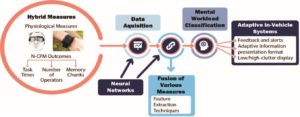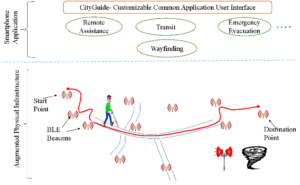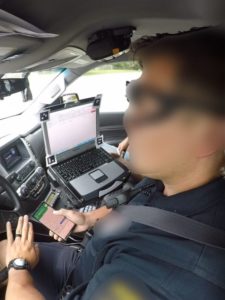Current Projects
Adaptive Driver Assistance Systems and Personalized Training for Law Enforcement Officers (ADAPT−LEO)
Objective: The goal of this project is to provide real-time in-vehicle technology and driver training adaptation for law enforcement officers (LEOs) using a combination of top-down and bottom-up research approaches. This project includes naturalistic observations, cognitive performance models of novice LEOs, and human-subject experiments.

EMG-based Assistive Human-Machine Interface Design: Cognitive Workload and Motor Skill Learning Assessment
Objective: The overarching goal of the present research is to provide engineering and design guidance for EMG-based assistive human-machine interfaces for human performance of basic psychomotor and real-time, high-demand control tasks.

Seamless and Inclusive Location-Based Services for Communities
Objective: The goal of this project is to provide an easy to use and low-cost indoor navigation system for people with disabilities. This project uses a combination of usability evaluation methods including focus groups, user testing, and heuristic evaluation.

Analysis of Advanced Driver-Assistance Systems in Police Vehicles
Funded by: Safety through Disruption (Safe-D) University Transportation Center (UTC)
Objective: This project investigates how advanced driver-assistance systems (ADAS) should be designed and implemented in police vehicles to improve driver safety. The outcomes will provide practical guidelines to automotive companies supplying police vehicles regarding effective ADAS features/types and can improve officer safety in police operations. We have recently completed Phase 1 of this project. The guidelines generated from the findings of this phase can be found here.

Law Enforcement In-vehicle Technology Design, Training, and Driving Distraction
The goal of this project is to design police in-vehicle technology interfaces to improve multitasking behavior and reduce driving distractions, especially in emergency situations. In addition, we are focused on assessing training procedures to improve officer cognitive performance under high workload conditions.

Modeling Emergency Responder Interactions with In-vehicle Technologies
The goal of this project is to identify the most physically and cognitively demanding human-technology interactions in emergency vehicles using state-of-the-art biomechanical and cognitive performance modeling techniques.

